Expository note from the author Dr. Sarah Grace Manski: As a leading blockchain scholar, P2P Foundation Fellow and author on the Technological Commonwealth, I was invited by the organizers to participate in the Crypto Commons Gathering 2021 (CCG21). I’m a political economist, ethicist, global technologist, entrepreneur, and professor at George Mason University. For the past 25 years I have been involved with projects empowering workers as an activist, labor organizer, journalist, researcher and Business/Global Affairs professor.
My research is situated at the intersection of global business, new technologies, and social enterprise concerning commons-based peer production, self-sovereign identity, generative value accounting, supply chain transparency, and strategic approaches for a 21st century technological commonwealth. I’m a widely cited academic author, speaker at technology conferences globally, advisor at VERSES.io and the Civana Foundation, affiliate researcher with the P2P Foundation and the George Mason University Center for Social Science Research (CSSR), and an Expert Reviewer for the NSF’s SBIR program.
Crypto is moving into American’s lives and it won’t be long before it’s everywhere. With each passing month new applications are introduced, bringing blockchain technology mainstream. While you have likely heard of Bitcoin, buying and using this cryptocurrency is still a tricky process. That’s soon to change as for the first time, members at hundreds of U.S. banks will soon be able to buy, hold and sell the cryptocurrency through their existing accounts. Bitcoin is only the most visible application of a massive global movement converging around multiple technologies that include:

- Distributed ledgers
- Open innovation ecosystems
- Social enterprises
- Platform cooperatives
- Decentralized data management infrastructures
- Local innovators and peer-to-peer networks
- Marketspace and rural labs
- Bio-hacklabs
- Token economies and
- New value systems with the goal of constructing a commons-based global political economy
This diverse emergent community is experimenting with using technology to create alternative forms of production, relationships, and ownership, with radically new and different logics beyond capitalist extraction, exploitation, market competition, and private ownership. The digital commons movement is building systems incentivizing sharing, decentralization and cooperation based on a global commons of knowledge, data, and the environment for the collective good.
Against this backdrop, the technologists calling themselves the CryptoCommoners gathered in a small inn in the Austrian Alps. Their mission? To build the foundations for a global movement, bringing practitioners and academics working to grow the Crypto Commons. The combination of exploratory practice and academic research was designed to be mutually beneficial: Crypto Commons project leaders were invited to flag problems they encounter with Commons Practice and theory early on in order to shape the event according to their needs.
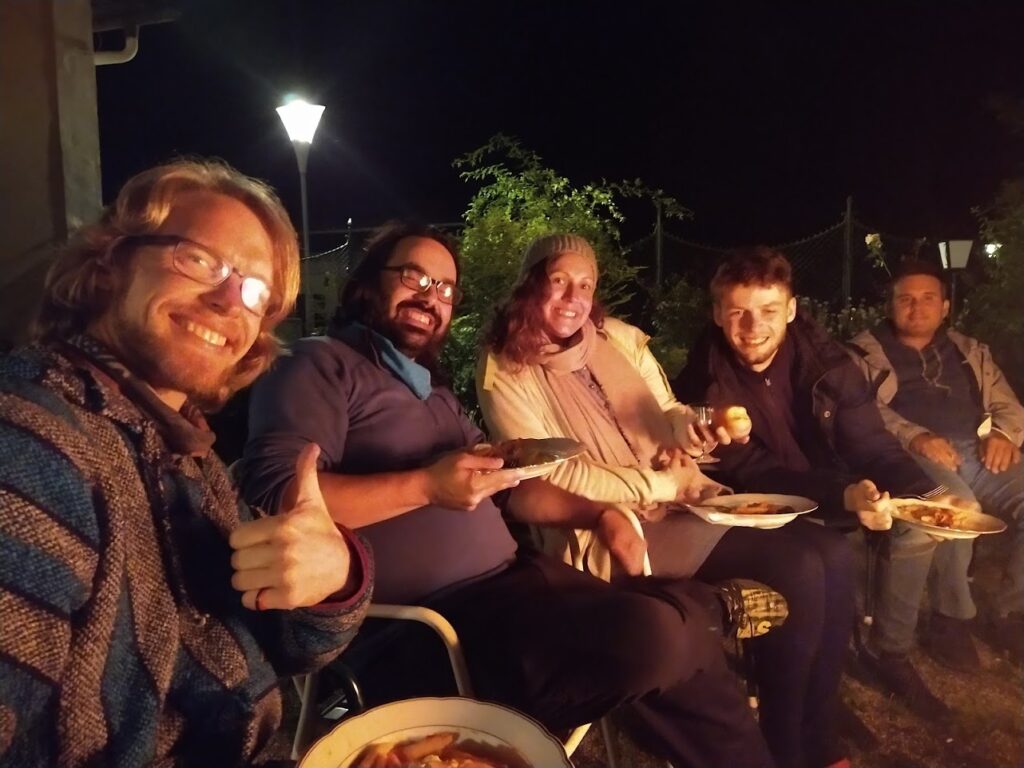
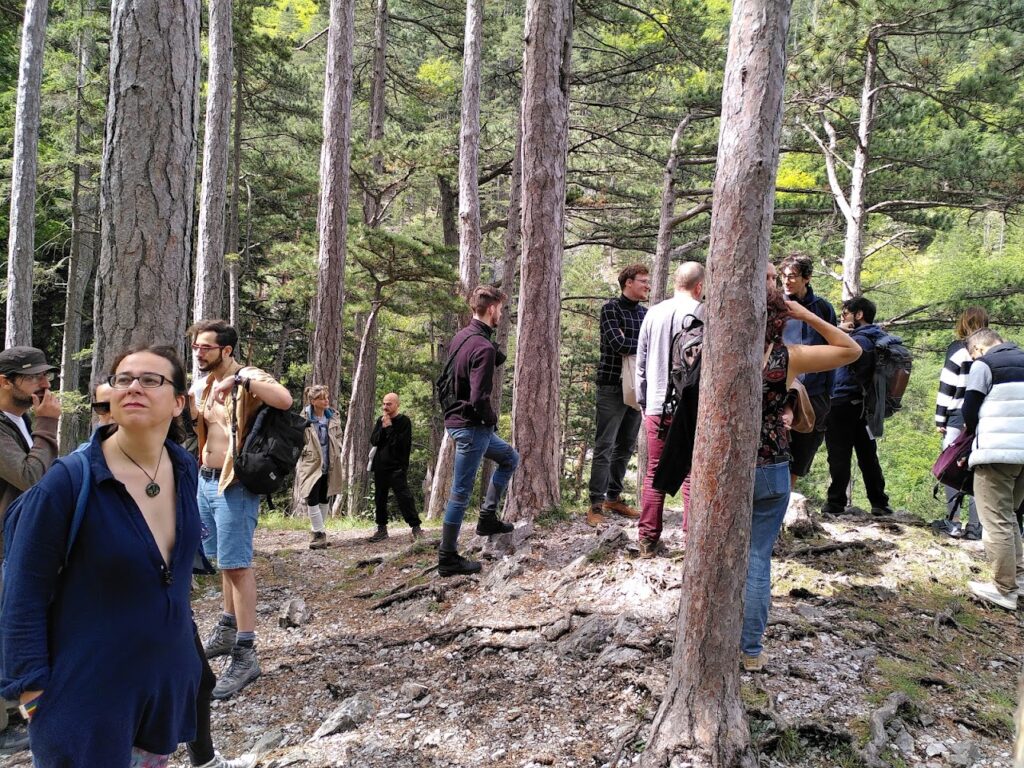
My research focuses on the emerging ethical questions related to the impact of technology on humanity and how a commons-based economic model with a new approach to value, ownership, production, equity, work processes and social dynamics can be built. I research questions like, “How can we build an economic model to empower people to manifest positive behaviours and reduce opportunistic behaviour in the market?” and “What role will Blockchain play in creating a new and sustainable commons-based economy?”
After a rescheduling to allow all participants to be vaccinated and a nine hour flight out of Dulles, my associate Josh (aka The Blockchain Socialist) thankfully met me at the train station platform at the Vienna airport. In addition to a weekly podcast where he interviews those inhabiting the commons movement section of blockchain universe, Josh also works on the Breadchain Project. Breadchain is working to manage resources in common ownership for decentralized cooperative projects.

We arrived at the conference venue in a small alpine tourist village. The former inn, turned artist colony, turned abandoned artist colony, is owned by Felix’s father. Felix is a main organizer of the Crypto Commons Gathering. He possesses an unassuming demeanor, he’s usually wearing a cap over a flop of dark hair and as a practice maintains an expertly hand-rolled cigarette in his mouth. Felix shows me to my room, which includes a sink and a mattress on the floor. We share two bathrooms in the inn. As the heating oil the inn uses is unavailable, there is no central heating and it’s very cold in the entire place .
As I walk down the hall from my room on a mission to hopefully score something to eat, I’m introduced to a thin man with a spliff in his mouth, Scott Morris (aka The Token Jedi). Scott, the co-founder of the QOIN Foundation, has been working to apply his background in community currencies to designing cooperative token ecosystems. I found out on a later hike together that he was also an unacknowledged author of the Bancor whitepaper, which is kind of a big deal. If you’ve never heard of Bancor, it was the first project to establish a new class of digital assets, called “Smart Tokens”, “smart” because the smart contracts governing them requires one or more pre-existing token(s) be maintained in a reserve. Thus, by holding an easily exchangeable token in reserve, anyone may easily buy into or cash out of a Smart Token at any time. Bancor also held a historic, world record setting $152M token allocation event (an ICO).

On my way to the kitchen, I pass by the common room with a prominent long wooden bar area where a dark haired bearded man was figuring out how to use a metal coffee maker. I’m eager to make his introduction because I am severely jetlagged and sorely in need of coffee. I casually ask Michael Zargham, the founder and CEO of BlockScience, an engineering, R&D, and analytics firm specializing in complex systems what new possibilities are opening up with distributed ledger technology. He launches into an extremely sophisticated, jargon intense technical description on the importance of recognizing subjectivity in technology…while he’s measuring out espresso beans.
I’m hearing, “Content Addressable Transformers… scripts… cluster… auditability… smart contracts… multi-party verification streams… provenance over data sets… GDS as canonical forms… (and he’s rattling off multiple math equations that represent these concepts). Yikes. I grab the nearest notebook and it’s all I can do to stay focused enough to follow the basic logic of what he’s telling me. My notes do no justice to his explanations, so dear reader please imagine that every quote is 10 times more intelligent.

Zargham is the creator of Complex Adaptive Dynamics Computer-Aided Design (cadCAD) software, a modeling framework and powerful simulation tool to harness the power of a disruptive idea or technology. It is designed to recognize system complexity yet collapse systems design into something simple and insightful. He told me, “I bought a house because rather than being a digital nomad myself I am building a co-working space in my house for my friends who are digital nomads to land. In addition to running BlockScience, he’s working with the Metagovernance Project, an interdisciplinary research collective building standards and infrastructure for digital self-governance.
He tells me that on the internet, self-governance is not a natural right; it is enabled and circumscribed by the architecture of the platform on which people interact. That same architecture also governs the interaction between separate user-generated institutions. Metagovernance describes these two related roles: enabling and constraining users’ ability to create their own institutions, and governing the interaction between separate institutions. A common theme Zargham keeps encountering is the blindness between social systems and technical systems. As he says: “Technologists need to make connections with the real world.”
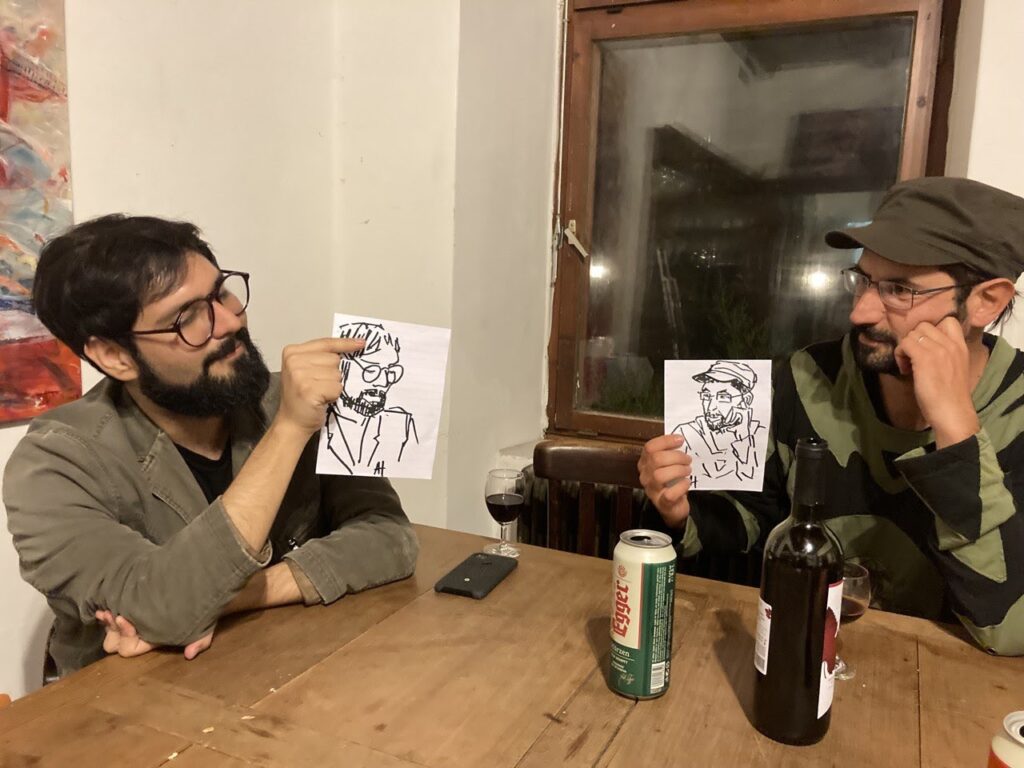
The Italians made penne pasta for dinner, part of a cooperative free kitchen in Vienna. Each of us took a shift helping them cook or clean. We ate around a large fire pit which kept the chilly mountain air at bay. The Italians also brought cases of wine and everyone tried a local specialty, Radler, a canned beer with lemonade flavor–not my favorite. Several hash joints were passed around during mealtime and the conversation over a piano ranged from optimal token design and the challenges to DAO governance, to monopoly control of access to the internet, and how to popularize the need to grow the commons. Gatherers also discussed their own projects and offered each other advice.

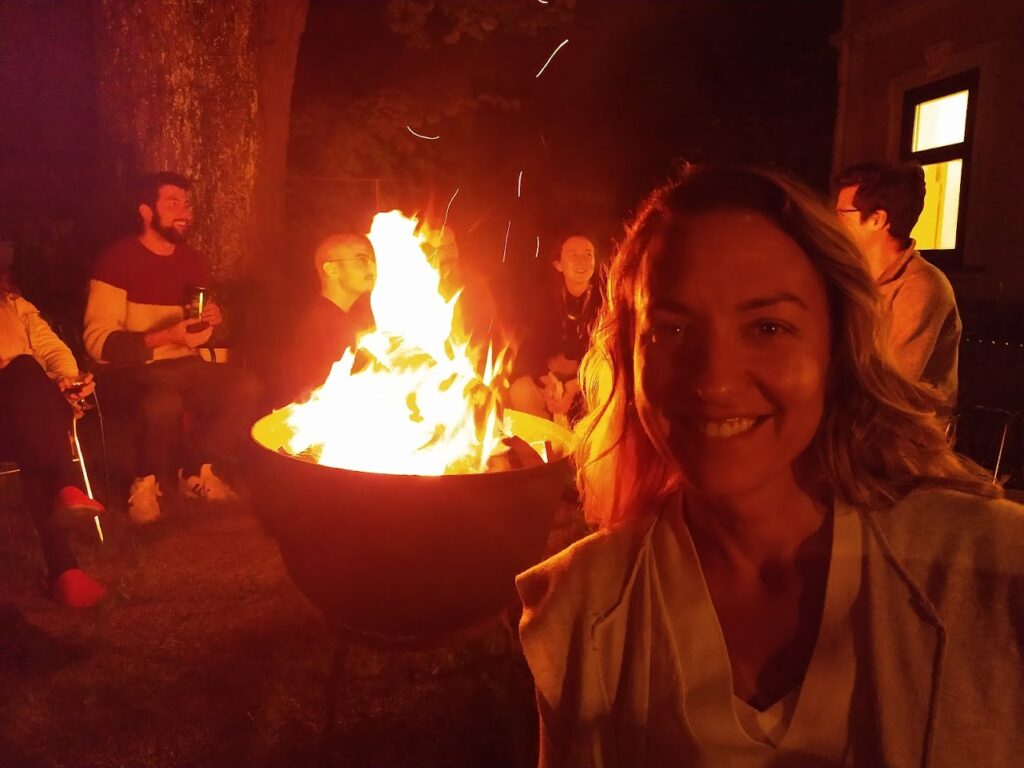
I went to bed at 2 a.m. and about 10 people were still outside. This was the rhythm of life for the week. Reflecting the larger technologist demographic, there were definitely fewer women in attendance than men, only about six out of around 25. I was able to figure out the ancient espresso machine and brought my coffee to the morning presentation by Jeff Emmett on Augmented Bonding Curves. Jeff does the communications work for Zargham at BlockScience and is a main organizer at The Commons Stack.
Zargham’s research shows that bonding curves themselves are only the doorway to this design space. Like many of the aforementioned topics, the Augmented Bonding Curve design gets complicated for those not immersed in the blockchain universe. It includes a funding pool, a token lock-up/vesting mechanism, and inter-system feedback loops. ABC’s are designed to incentivize early adopters with tokens encoded with intrinsic value, in the creation of a new funding model for continuous organizations governed by their communities. The Commons Stack’s mission is to build commons-based microeconomies to sustain public goods through incentive alignment, continuous funding and community governance by creating a library of open-source, interoperable web3 components. This will put effective new tools in the hands of communities, enabling them to raise and allocate shared funds, make transparent decisions, and monitor their progress in supporting the Commons. They have build four key components for what they believe create a ‘Minimum Viable Commons’:
- the Augmented Bonding Curve would provide sustainable funding for communities
- the Giveth Dapp provides a proposal and escrow service
- the Conviction Voting platform, which is a continuous decision making governance process
- the Commons Analytics Dashboard (powered by cadCAD)
ABCs help to act as the interface between the internal economy of the Commons and the outside world, something Michel Bauwens, founder of the P2P Foundation has long stressed is necessary.

Bauwens, research director of Commons Transition, a platform for policy development aimed toward a society of the Commons and a founding member of the Commons Strategies Group, with Silke Helfrich and David Bollier, collaborates with a global group of researchers in the exploration of peer production, governance, and property. He has co-published several books and reports in English, Dutch and French (including with this author). Some of his features are ‘Network Society and Future Scenarios for a Collaborative Economy’, and more recently, P2P: ‘A Commons Manifesto’. Presently, Bauwens advises the Co-Creation Foundation in Vienna, and to One Project. His presentations almost always begin with the statement that the commons economy was the first form of human interaction and that the enclosures of capitalism solve common wealth for the profit of a few.
Bauwens argues that the internet ushered in a new phase in the history of the commons in 1993, because it enabled organizing outside the modalities of the state. And since 2008, the year the Bitcoin Protocol was dropped on the world, we’ve seen the development and massive growth of the Cosmological Commons, which birthed a new type of networking freedom. It is a peer-to-peer relational dynamic which allows every individual to connect to any other individual. Permissionless blockchains (also known as trustless or public blockchains) are open networks available to everyone to participate in the consensus process that blockchains use to validate transactions and data. They are fully decentralized across unknown parties. He states that this is a hallmark of traditional small groups of humans engaged in commons practices, albeit scaled-up dramatically by technology. This creates the possibility of global open source civic networks and generative economic coalitions that surpass the capacities of both state hierarchies and capitalist market-dynamics.
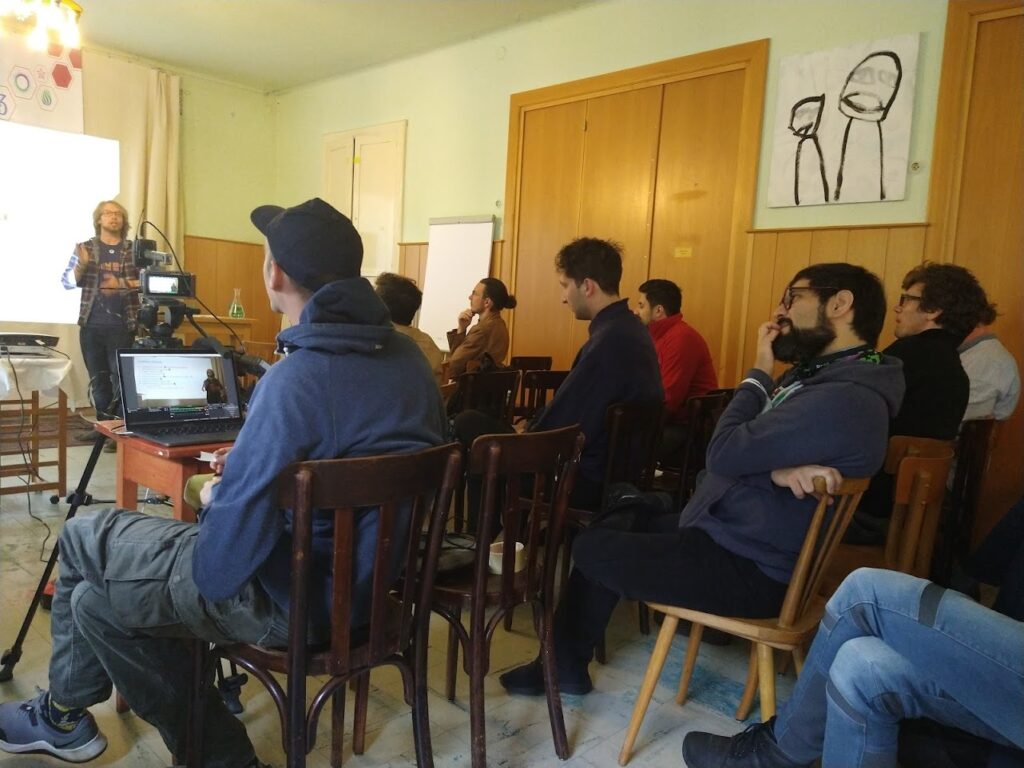
There are caveats to this imaginative utopia. Bauwens warns that the concept of technological P2P, in which every server is autonomous, is in tension because there is a consistent capacity for commoning (i.e. the free association to pool, mutualize and share resources). There is also the capacity for entrenching existing power imbalances and inequalities — an anarcho-capitalist, libertarian–propertarian vision, which sees society as a collection of individual entrepreneurs. Between the commons view and the hyper-market view, there remains a steep divide. Think of this as competing visions of our shared future between the CryptoCommoners and the BitcoinBros, and whoever wins out, wins our future.
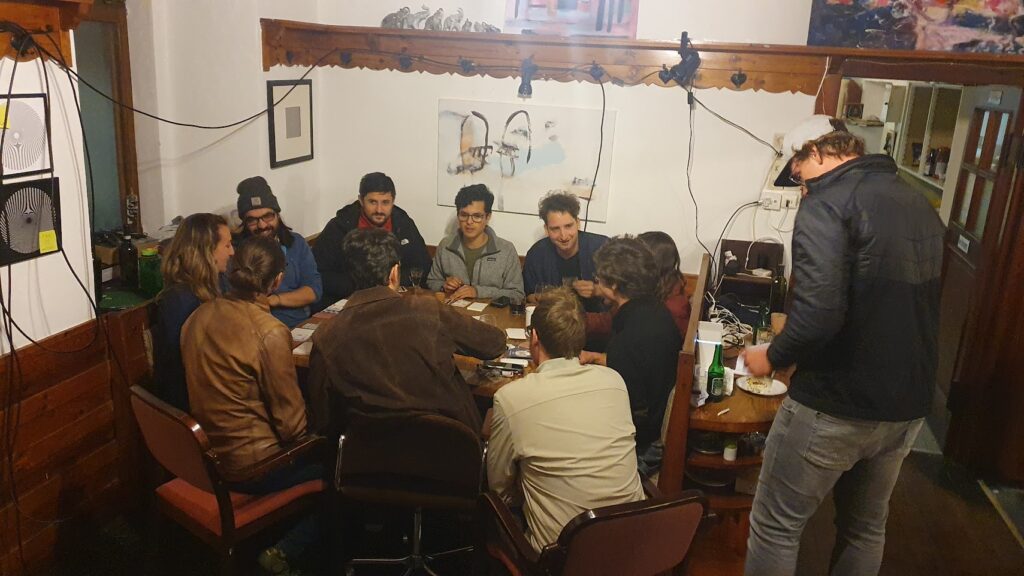
Over the course of the gathering, we participated in ‘fishbowl’ sharing exercises where we got to talk about why we were there. Generally, we agreed that our overarching systems designs for the future should include these shared principles:
- Stakeholder incentive alignment is a must
- Everything should be radically open-source and enable interoperable, semantically compatible protocols that engage iterative development incorporating robust engineering practices
- We’ll need polycentric governance
- Systems should incorporate planetary boundary ecological economics
- They should be biomimetic by design
Among the general consensus lay an underlying sense of tension. We took turns buoying between optimism and pessimism about the future, and ruminating on the extent to which we could realistically build institutions within capitalism that would transform the system from within.
Our goal was to formulate a way to bridge the crypto commons and the worldwide cooperative movement. The question was which kinds of tools and ecosystems would best be utilized to shift trillions of dollars away from capitalism toward a more circular economy? Our shared agreement: While the exact plans and processes may take years to be defined, what we do know now is that it’s going to take a shared story to unite all of humanity under these new, regenerative systems. We’re committed to crafting that story–together.










